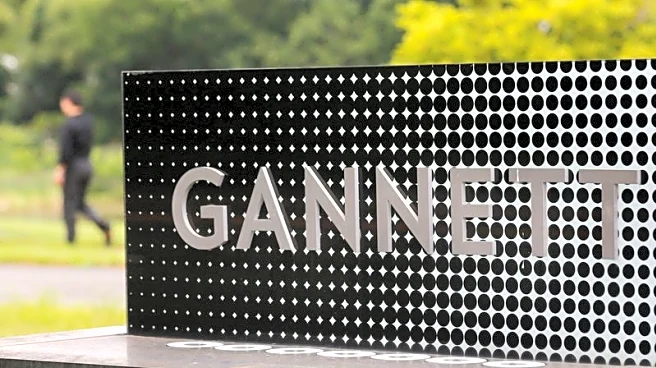What is the story about?
What's Happening?
Gannett, the largest newspaper publisher in the U.S., has successfully dismissed most claims in a lawsuit alleging its diversity policies led to discrimination against white journalists. U.S. District Judge Rossie Alston ruled that the plaintiffs failed to demonstrate that Gannett's alleged 'reverse race discrimination policy' caused similar harm across its numerous media outlets. The lawsuit, initiated by five former journalists, challenged Gannett's 2020 policy aimed at aligning newsroom demographics with community racial and ethnic profiles by 2025. While four plaintiffs were dismissed from the case, one plaintiff, Logan Barry, was allowed to pursue claims of being denied a promotion in favor of a less qualified Black candidate. Gannett has maintained that its diversity goals were aspirational and did not establish quotas.
Why It's Important?
The dismissal of most claims in this lawsuit underscores the complexities surrounding corporate diversity policies and their legal implications. Gannett's victory may influence how media companies approach diversity initiatives, balancing aspirational goals with potential legal challenges. The case highlights broader societal debates about affirmative action and reverse discrimination, particularly in the context of President Trump's focus on eliminating corporate diversity policies during his second term. The outcome may impact future litigation strategies and corporate policies, as companies navigate the legal landscape of diversity and inclusion.
What's Next?
The remaining claims in the lawsuit will proceed, potentially setting precedents for similar cases involving diversity policies. Gannett and other media companies may reassess their diversity strategies to mitigate legal risks while promoting inclusivity. The case could prompt further scrutiny of corporate diversity initiatives, influencing public discourse and policy development. Stakeholders, including legal experts and civil rights advocates, will likely monitor the proceedings closely, evaluating their implications for workplace diversity and equality.
AI Generated Content
Do you find this article useful?















